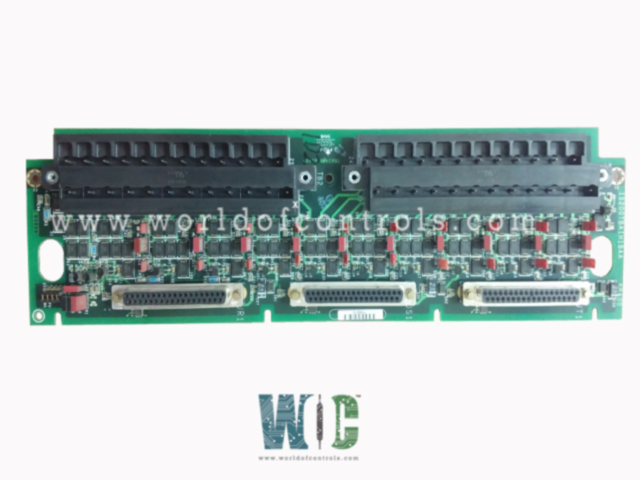SPECIFICATIONS
Part No.: IS200TBAIH1BBB
Manufacturer: General Electric
Country of Manufacture: United States of America (USA)
Temperature: -30 to 65 oC
Size: 10.16 cm wide x 33.02 cm high
Product Type: Analog Input terminal board
Availability: In Stock
Series: Mark VI
Functional Description
IS200TBAIH1BBB is an analog input terminal board developed by GE. It is a part of Mark VI control system. The Analog Input terminal board is designed to accommodate a total of 10 analog inputs, providing flexibility for various types of transmitters. These inputs can handle two-wire, three-wire, four-wire, or externally powered transmitters, catering to diverse system requirements.
Features
- Analog Output Options: In addition to analog inputs, the terminal board includes two outputs that can be configured for either 0-20 mA or 0-200 mA current. This versatility allows users to tailor the output settings based on specific application needs, ensuring compatibility with different devices and systems.
- Noise Suppression Circuitry: Both inputs and outputs on the terminal board are equipped with noise suppression circuitry. This feature helps protect against surge and high-frequency noise, ensuring stable and reliable signal transmission and reception even in challenging environments.
- Connector Configuration: The Analog Input terminal board features three DC-37 pin connectors (JR1) for connection to the I/O processors. Users have the flexibility to configure connections as simplex on a single connector or TMR (Triple Modular Redundancy) using all three connectors. This adaptability caters to different system architectures and redundancy requirements.
- TMR Operation: In TMR applications, input signals are distributed to the three connectors designated for the R, S, and T controls. The terminal board combines the current from the connected output drivers and measures the total current using a measuring shunt. The total current signal is then presented to the electronics for regulation to the commanded setpoint, ensuring redundancy and fault tolerance in critical operations.
Configuration
The terminal board configuration is primarily achieved through the use of jumpers, allowing users to customize input and output settings according to specific requirements. Here's a detailed expansion on the available jumper choices and their functions:
- Current vs. Voltage Input (Jumpers J1A through J8A): These jumpers enable users to select between current input or voltage input for each of the eight channels on the terminal board. By configuring these jumpers, users can tailor the input type based on the requirements of the connected devices or sensors.
- Return Connection Selection (Jumpers J1B through J8B and J9B through J10B): Jumpers J1B through J8B and J9B through J10B determine whether the return connection is connected to common or left open for each channel. This flexibility allows users to configure the return connection according to the specific grounding requirements of the system.
- Input Current Range Selection (Jumpers J9A and J10A): These jumpers enable users to select between 1 mA or 20 mA input current for channels 9 and 10. This feature provides versatility in adapting to different input current ranges required by specific sensors or devices.
- Output Configuration (Jumper J0): Jumper J0 is used to configure output 1, allowing users to select between 20 mA or 200 mA output current. This option provides flexibility in adjusting the output current to meet the needs of connected devices or systems.
- Additional Configuration via Toolbox: While jumpers handle basic configuration tasks, other settings related to VAIC (Voltage Analog Input Configuration) or PAIC (Power Analog Input Configuration) can be adjusted using the toolbox. This software-based approach allows for more advanced configuration options and fine-tuning of parameters to optimize system performance.
The WOC team is always available to help you with your Mark VI requirements. For more information, please contact WOC.
Frequently Asked Questions
What is IS200TBAIH1BBB?
It is an Analog Input terminal board developed by GE under the Mark VI series.
How many channels does each terminal board support?
Each terminal board supports a total of 12 channels, consisting of 10 Analog Input (AI) channels and 2 Analog Output (AO) channels.
What is the input span for transmitters connected to the terminal board?
The terminal board accepts transmitters with a 1-5 V dc output range derived from a 4-20 mA current input.
What are the specifications for the outputs provided by the terminal board?
The terminal board provides 24 V outputs with a current of 21 mA each for each connection.
